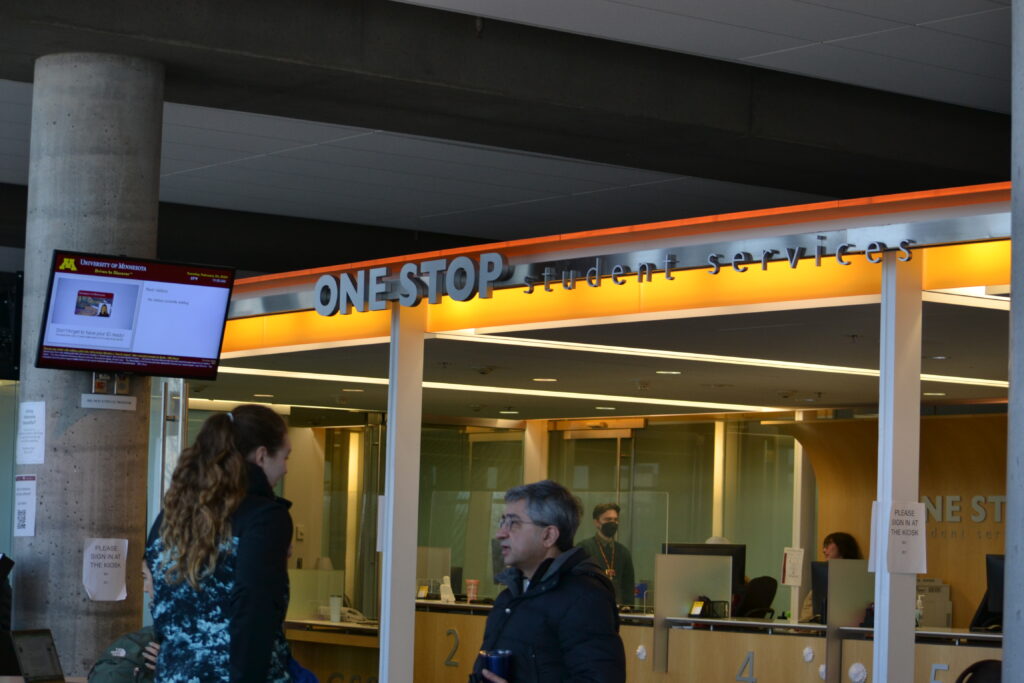FAFSA delays disrupt financial planning for first-gen students
The University of Minnesota extended its confirmation deadline for the upcoming academic year, but the school’s financial aid office is still receiving concerned calls.

One Stop Student Services office in Bruininks Hall in Minneapolis, Minn., on Tuesday, Feb. 20, 2024. One Stop is a hub for students to ask about registration, financial aid and tuition payments.
By Gabrielle Erenstein
The U.S. Department of Education announced changes to the Free Application for Federal Student Aid, also known as FAFSA, last November. While the redesign was supposed to improve the form, the agency failed to adjust for inflation.
The mistake, which required correction, caused major delays for college financial aid timelines at universities across the country, including the University of Minnesota, which announced new application deadlines in February.
The delay has made it challenging for students who count on the FAFSA to determine how much aid they will receive. .
At the university, 54% of undergraduate students received some type of grant or scholarship aid for the 2021-2022 academic year, according to the Integrated Postsecondary Education Data System.
Students applying to the university are waiting to hear what kind of financial aid the school can offer them. In the past, FAFSA has shared financial data with universities within weeks of the application being submitted.
Students enrolled at the university must wait longer to hear how their financial aid will be processed. The FAFSA mistake is disproportionately affecting first-generation students.
All University of Minnesota campuses have extended their confirmation deadlines, according to the Office of Undergraduate Education. The Twin Cities campus has extended the deadline to May 15.
One update to the new FAFSA is called the Student Aid Index, or SAI, a formula that calculates each student’s financial aid eligibility. This is replacing FAFSA’s old way of calculating financial aid eligibility, according to the Federal Student Aid website.
The SAI formula allows more students to qualify for financial aid, with 610,000 more students eligible for Pell Grants. This type of federal loan does not have to be repaid and it’s specifically for students who come from low-income families, according to the Federal Student Aid website.
About 50% of first-generation students at the university are also Pell Grant recipients, according to the 2023 First-Generation Undergraduate Student Snapshot.
Calls are already coming in to One Stop Student Services from first-generation students who are concerned about receiving their financial aid information in time to make a decision about enrolling at the university, One Stop Student Services employee Cooper Gerads said.
Gerads said that first-generation students call with concerns very often, either about FAFSA delays or other problems with completing the form.
Since the FAFSA delay is a nationwide problem, there isn’t much One Stop Student Services can do to help concerned families and students, Gerads said.
When asked about the FAFSA delay and the university’s response, Robert McMaster, outgoing former vice provost and dean of undergraduate education, wrote in a statement to Access U: “We know that choosing a university and figuring out how to pay for it are significant decisions for most students and families. We wanted to provide incoming students additional time to receive their financial aid offer, apply for housing, and make the right college decision for their circumstances.”

